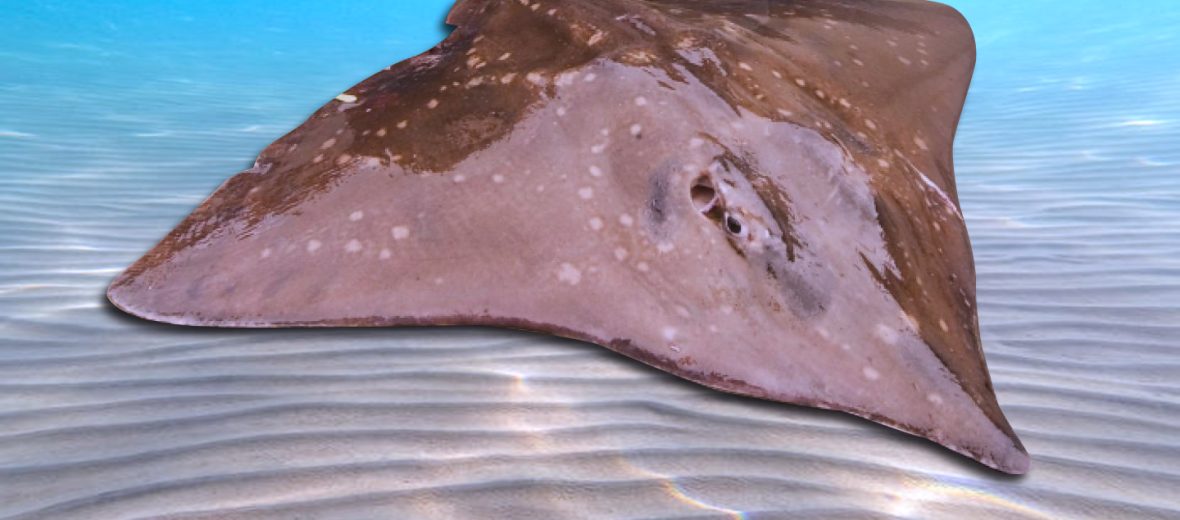
The common skate, aka blue skate or common blue skate, is the largest known skate in the world. They were quite abundant at one time, but now are predominantly absent from most of their historical range of the northeast Atlantic Ocean as well as the Mediterranean Sea. Due to overfishing and bycatch (unintentional capture in fishing nets and long lines), these critters are now listed as Critically Endangered by the IUCN. Their numbers are also decreasing. The last update of their status was in 2021.
First the Stats…
Scientific name: Dipturus batis
Weight: Up to 249 lbs.
Length: Up to 9.4 feet
Lifespan: Up to 100 years
Now on to the Facts!
1.) In 2009 and 2010 research suggested that these creatures should be divided into 2 species: the blue skate and the flapper skate.
2.) These bottom-dwelling creatures can be found at depths of up to 3,281 feet.
3.) They are sexually mature at approximately 11 years of age.
4.) Reproduction occurs every other year.
5.) Females lay upwards of 40 egg cases in the sandy or muddy flats.
But wait, there’s more on the common skate!
6.) Egg cases measure up to 10 inches long, plus their horns.
7.) Eggs hatch in up to 5 months.
Did you know…?
These creatures are currently protected by the European Union.
8.) They prey on bristle worms, cephalopods, clams, crustaceans, oysters, snails, and small to medium-sized fish (like catsharks, flatfishes, monkfishes, sand eels, spurdogs, and even other skates). These skates also prey on mackerel, herring, and other fish.
9.) Skates belong to the Chondrichthyes class; Chondro meaning cartilage and ichthos meaning fish.
10.) Sharks, other skates, rays, and grey seals all prey on common skates.
Now a Short Common Skate Video!
This video talks about skates in general.
Be sure to share & comment below! Also, check out the Critter Science YouTube channel. Videos added regularly!
Want to suggest a critter for me to write about? Let me know here.
Some source material acquired from: Wikipedia & IUCN



